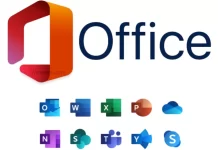In today’s rapidly evolving digital landscape, efficient and versatile productivity tools have become essential for businesses and individuals alike. Microsoft Office, a leading software suite, has been a cornerstone of productivity for decades, revolutionizing the way we work, communicate, and collaborate. In this article, we will explore the various versions of Microsoft Office available in the Arab Emirates, diving into their distinctive features, advantages, and disadvantages to help users make informed decisions.
-
Table of Contents
## H2: Microsoft Office 2019
Microsoft Office 2019 is the latest perpetual version of the software suite, offering a one-time purchase option instead of a subscription-based model. It encompasses all the classic applications such as Word, Excel, PowerPoint, and Outlook, making it an attractive choice for users in the UAE seeking comprehensive productivity solutions.
Advantages:
- Offline Usage: One of the significant benefits of Microsoft Office 2019 is that it does not require an internet connection to function, making it highly reliable even in areas with limited internet access.
- Familiar User Interface: Users accustomed to earlier Office versions will find Office 2019’s interface familiar, reducing the learning curve and enhancing overall productivity.
Disadvantages:
- Limited Updates: Unlike Office 365, Office 2019 receives limited updates, missing out on new features and security patches. Over time, this could result in potential vulnerabilities and reduced compatibility with newer systems.
- Higher Upfront Cost: The one-time purchase option of Office 2019 might be cost-prohibitive for some users, especially when compared to the subscription-based Office 365.
-
Microsoft Office 2016
Office 2016 was the predecessor to Office 2019 and shares many similarities with its later version. It also offers a perpetual license and includes an array of applications, making it a suitable choice for various users in the UAE.
Advantages:
- Stability and Reliability: As a mature software version, Office 2016 is stable and has been thoroughly tested, minimizing the occurrence of bugs and errors, ensuring a smooth user experience.
- Compatibility: Office 2016 files are widely compatible with other versions, ensuring seamless collaboration with partners using different Office editions.
Disadvantages:
- Lack of Real-time Collaboration: Office 2016 lacks the real-time collaboration features found in Office 365, hindering simultaneous editing and communication among team members, which could be a drawback for remote teams or those working across different locations.
- Limited Cloud Integration: While Office 2016 allows saving files to the cloud, its integration with cloud services is not as robust as Office 365, potentially limiting seamless access to documents across devices.
-
Microsoft Office 2013
Office 2013 was a significant milestone for Microsoft, introducing a touch-friendly interface optimized for Windows 8 and 10 devices. Though older, it remains an option for users seeking a more economical choice.
Advantages:
- Touch Compatibility: For touchscreen devices, Office 2013 offers a smooth and intuitive experience, enhancing productivity on tablets and hybrid laptops, which is beneficial for users who prefer working on touch-enabled devices.
- Comprehensive Feature Set: Office 2013 boasts an extensive array of features, satisfying the needs of most users without overwhelming them with unnecessary functionalities.
Disadvantages:
- Limited Support: With newer versions available, Office 2013 is no longer a priority for Microsoft in terms of updates and support, potentially leading to security vulnerabilities and compatibility issues with modern software.
- Reduced Collaboration: The collaboration features in Office 2013 are not as advanced as those in Office 365, making it less suitable for remote teamwork and real-time co-authoring of documents.
- Microsoft Office 2010
Before the advent of touch-friendly interfaces, Office 2010 was renowned for its productivity-enhancing capabilities. Although aging, it might still be a viable choice for specific users in the UAE.
Advantages:
- Stability: Being an older version, Office 2010 is mature and well-established, ensuring a stable and smooth experience for users, which can be advantageous for organizations that prioritize reliability.
- Resource-Friendly: Office 2010 requires fewer system resources compared to its successors, making it suitable for older computers or devices with limited processing power.
Disadvantages:
- Outdated Interface: The user interface of Office 2010 may appear dated, lacking the modern aesthetics and functionality of newer versions, which might not appeal to users accustomed to more contemporary software designs.
- Limited Cloud Integration: Cloud services were not as prominent during the release of Office 2010, resulting in less seamless integration with modern cloud platforms, potentially hindering efficient document access and collaboration.
Conclusion
Microsoft Office offers a range of versions, each catering to different user preferences and requirements. In the UAE, businesses and individuals can choose from Office 2019, Office 2016, Office 2013, and Office 2010, depending on their budget and specific needs. While perpetual versions like Office 2019 and Office 2016 provide offline usage and a familiar interface, subscription-based Office 365 offers regular updates and advanced collaboration features, making it ideal for modern, agile work environments.
Ultimately, the decision on which Microsoft Office version to use boils down to individual preferences, budget constraints, and the need for the latest features and updates. Whichever version users choose, Microsoft Office will undoubtedly remain a powerful productivity tool, enhancing work efficiency and fostering collaboration across the UAE, contributing to the success of businesses and individuals alike in this rapidly evolving digital era.








